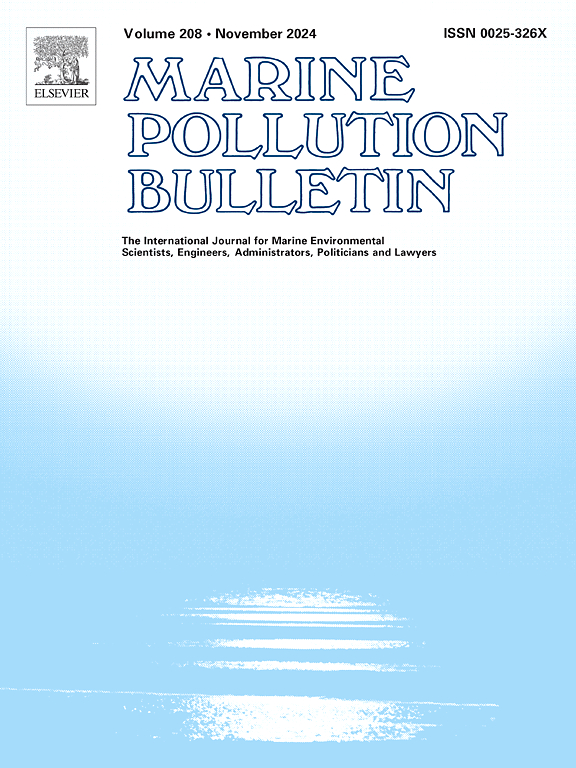中国沿海地区海洋和陆地连续热浪更频繁、时间更长、温度更高。
IF 5.3
3区 环境科学与生态学
Q1 ENVIRONMENTAL SCIENCES
引用次数: 0
摘要
海洋热浪(MHW)可以增加陆地和海洋之间的热交换,并可能进一步发展为连续的海洋和陆地热浪(CMTHW)。尽管它们意义重大,但这些复合事件背后的反馈机制仍未得到充分理解。本研究利用多个温度数据集,对中国沿海地区陆地和海洋热浪之间的相互作用进行了全面分析。我们的研究结果表明,在过去的40年里,CMTHWs的频率和空间范围都显着增加。值得注意的是,持续时间更长、强度更大的热浪更有可能引发随后的陆地热浪(thw),这表明与独立的热浪相比,陆地热浪与更严重、更持久的热浪相关。相对于海洋,大气过程导致了额外的陆地表面变暖。具体而言,在CMTHWs期间,陆地表面潜热通量异常明显大于海洋,突出了大气反馈的关键作用。这些发现强调需要进一步研究海洋和陆地热浪之间的联系机制,以及对沿海气候动力学和生态系统恢复力的更广泛影响。本文章由计算机程序翻译,如有差异,请以英文原文为准。
More frequent, longer, and hotter consecutive marine and terrestrial heatwaves in China's coastal regions
Marine heatwave (MHW) can increase heat exchange between the land and the ocean, which may further develop into a consecutive marine and terrestrial heatwave (CMTHW). Despite their significance, the feedback mechanisms underlying these compound events remain inadequately understood. This study provides a comprehensive analysis of the interactions between terrestrial and marine heatwaves across China's coastal regions, leveraging multiple temperature datasets. Our findings reveal a marked increase in both the frequency and spatial extent of CMTHWs over the past four decades. Notably, longer lasting and more intense MHWs are more likely to trigger subsequent terrestrial heatwaves (THWs), indicating that CMTHWs are associated with more severe and prolonged MHWs compared to standalone MHWs. Atmospheric processes cause additional land surface warming relative to the ocean. Specifically, during CMTHWs, land surface latent heat flux anomalies are significantly larger than those over the ocean, highlighting the critical role of atmospheric feedback. These findings underscore the need for further investigation into the mechanisms linking marine and terrestrial heatwaves and the broader implications for coastal climate dynamics and ecosystem resilience.
求助全文
通过发布文献求助,成功后即可免费获取论文全文。
去求助
来源期刊

Marine pollution bulletin
环境科学-海洋与淡水生物学
CiteScore
10.20
自引率
15.50%
发文量
1077
审稿时长
68 days
期刊介绍:
Marine Pollution Bulletin is concerned with the rational use of maritime and marine resources in estuaries, the seas and oceans, as well as with documenting marine pollution and introducing new forms of measurement and analysis. A wide range of topics are discussed as news, comment, reviews and research reports, not only on effluent disposal and pollution control, but also on the management, economic aspects and protection of the marine environment in general.
 求助内容:
求助内容: 应助结果提醒方式:
应助结果提醒方式:


